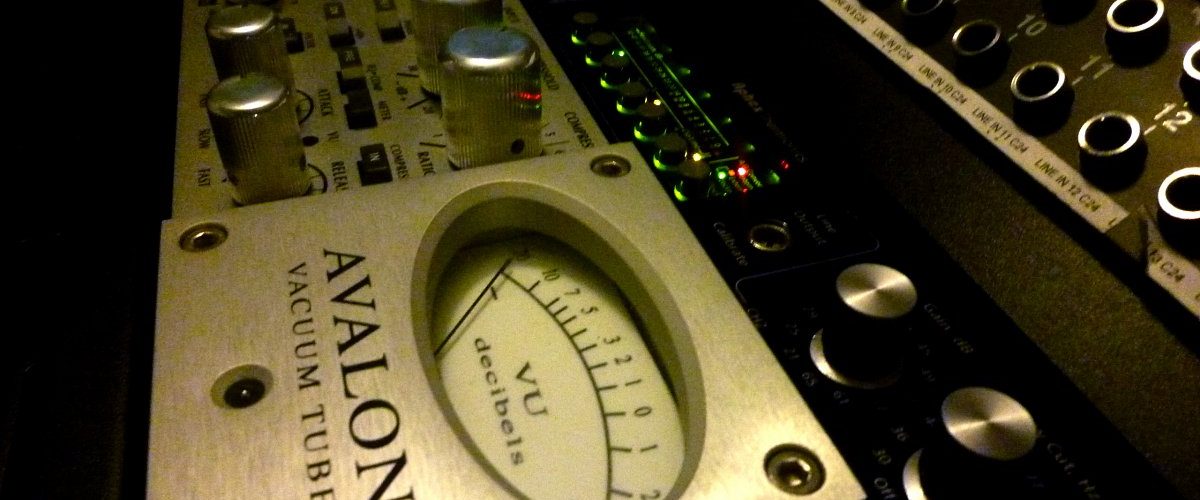Outboard Gear and Signal Chains
22nd June 2017

Signal chains are one of the more controversial aspects of recording music. Everyone wants to have the “most crisp vocal chain bro” or the “warmest bass signal path man.” What we mean when we say this is simply the gear your signal passes through from the source before it reaches your computer.
Microphone/Line In
The source can be a direct line from a guitar/bass/other instrument or a microphone picking up sound from an amp or a drum. Microphones are a whole world in themselves but generally people opt for condenser microphones in a studio setting. This is because they are generally more sensitive to dynamic response and have a better frequency range than dynamic microphones. Many condenser microphones require phantom power to activate them which is an output of 48v, usually coming from your interface/preamp. Preamps are an entire subject of their own. Like guitar and bass amps there are endless variations of pre amps, both tube and solid state. If that doesn’t make sense to you have a look at our guitar amp blog and go from there! Anyways, microphones. Dynamic microphones are built like tanks and can withstand anything you hurl at them. Famous examples are of course the Shure SM57 and Sm58’s. They are the tool of choice for live performances and DJ’s who wish to order their crowd to put their hands up or count backwards from 4 before a sick drop.
Generally the audio coming from the line input/microphone goes into a selection of gear before reaching the interface and being recorded into your DAW of choice.
EQ and Compression
Now this, this is where enemies are made. The “EQ before compression before EQ?” argument is age old and is still on going. At the end of the day, like most things in music, it’s totally subjective and down to taste. Experiment and go with what works for you, if it sounds right chances are it is right!
EQ
Generally at this point EQ is going to be broad and general. Nothing surgical. Make sure and listen to see if your vocal or instrument is lacking in a specific area, mainly the highs and the low mids and adjust your EQ accordingly. You can fix nasty frequencies more accurately later on in the mix process when the audio is recorded into your DAW. Many EQ’s (and audio interfaces) will have a sub 80 hz roll of. This is useful as it can remove a lot of rumble and room noise which you’ll be taking out later on in the mix anyways.
Compression
Compression, unlike the EQ is perhaps going to be more harsh when recording into your computer. This is because you generally want to be able to work with a more “solid” sound that isn’t constantly fluctuating. This isn’t to say you need to slam it through a compressor and remove all the dynamics from the sound – just tame it so you’re working with an audio track that’s a little more concrete. If you have more than one outboard compressor it’s sometimes good to use two with smaller threshold and ratio settings than one which higher values. Another good tip for compression is to use it as a de-esser and remove harsh sibilance from vocals. Something this works better than EQing out the top end as doing that can really take the air our of your recording so de-essing using a compressor is definitely worth looking in to!
Outboard gear is something which doesn’t come cheap a lot of the time. This means you need to research before buying and experiment with the order each piece of hardware is in your signal chain. Many people argue about whether or not it really sounds different than plugin alternatives. While we cannot confirm or deny this for fear of making many enemies – hardware certainly mixes up your work flow and the physicality of it can really spark creativity which you may not always get from software!
Until next time,




